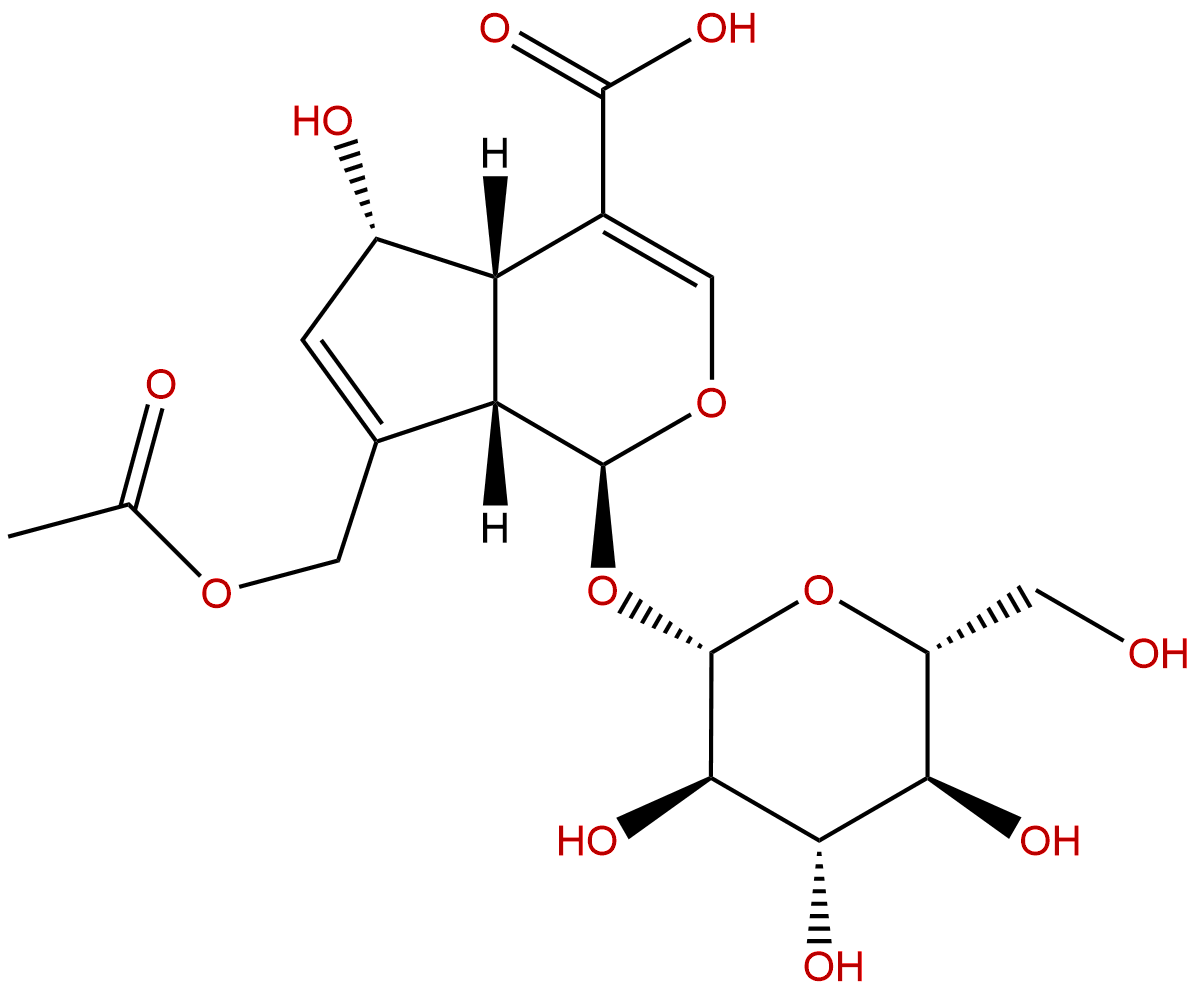
Asperulosidic acidCAS No.:25368-11-0
|
||||||||||
 |
|
|
||||||||

| Catalogue No.: | BP1668 |
| Formula: | C18H24O12 |
| Mol Weight: | 432.378 |
Product name: Asperulosidic acid
Synonym name:
Catalogue No.: BP1668
Cas No.: 25368-11-0
Formula: C18H24O12
Mol Weight: 432.378
Botanical Source: "Rubia peregrina and Rubia tinctorum; Gardenia jasminoides, Plantago lagopus and Mussaenda pubescens. Component of Zhi Zi"
Physical Description: Powder
Type of Compound: Iridoids
Purity: 95%~99%
Analysis Method: HPLC-DAD or/and HPLC-ELSD
Identification Method: Mass, NMR
Packing: Brown vial or HDPE plastic bottle
The product could be supplied from milligrams to grams. Inquire for bulk scale.
We provide solution to improve the water-solubility of compounds, thereby facilitating the variety of activity tests and clinic uses.
For Reference Standard and R&D, Not for Human Use Directly.
Description:
Asperulosidic acid has been recently used in chinese medicine as a useful drug against some tumors. It has anticlastogenic activity, since the anticlastogenic irridoids have an alpha-unsaturated carbonyl group, this structure is considered to play an important role in the anticlastogenicity. Asperulosidic acid can inhibit the seed germination and growth of seedlings of large crabgrass. Asperulosidic acid, and 6-O-(beta-D-glucopyranosyl)-1-O-octanoyl-beta-D-glucopyranose are effective in suppressing 12-O-tedtradecanoylphorbol-13-acetate (TPA)- or epidermal growth factor (EGF)-induced cell transformation and associated AP-1 activity.
References:
Yakugaku Zasshi. 1981 Jul;101(7):657-9.
Two novel glycosides from the fruits of Morinda citrifolia (noni) inhibit AP-1 transactivation and cell transformation in the mouse epidermal JB6 cell line.
The fruit juice of Morinda citrifolia (noni), a plant originally grown in the Hawaiian and Tahitian islands, has long been used by islanders to treat diseases, including cancer.
METHODS AND RESULTS:
Two novel glycosides, 6-O-(beta-D-glucopyranosyl)-1-O-octanoyl-beta-D-glucopyranose and Asperulosidic acid, extracted from the juice of noni fruits, were used to examine their effects on 12-O-tedtradecanoylphorbol-13-acetate (TPA)- and epidermal growth factor (EGF)-induced AP-1 transactivation and cell transformation in mouse epidermal JB6 cells.
CONCLUSIONS:
The results indicated that both compounds were effective in suppressing TPA- or EGF-induced cell transformation and associated AP-1 activity. TPA- or EGF-induced phosphorylation of c-Jun, but not extracellular signal-regulated kinases or p38 kinases, was also blocked by the compounds, indicating that c-Jun N-terminal kinases were critical in mediating TPA- or EGF-induced AP-1 activity and subsequent cell transformation in JB6 cells.
J.Weed Sci.Tech., 1986, 31:280-6.
Plant Growth Inhibitors in Catchweed Seeds and Their Allelopathy.
METHODS AND RESULTS:
Two Asp-related iridoidglucosides, compounds A and B were isolated from the dormant seeds of catchweed. By chemical analysis, compound A was identified as Asperulosidic acid which was derived from Asp through the cleavage of a lactone ring, and compound B as deacetyl Asperulosidic acid produced through the deacetylation of Asperulosidic acid. Asperulosidic acid inhibited the seed germination and growth of seedlings of large crabgrass and alfalfa to the same degree as Asp, but did not inhibit white clover, while deacetyl Asperulosidic acid showed lower inhibitory effect on the tested plants than Asp and Asperulosidic acid. Furthermore, Asperulosidic acid showed similar inhibitory activity to Asp on the germination of catchweed seeds themselves.
CONCLUSIONS:
Since these compounds were only detected in the exudate obtained from the seed coat of catchweed seeds, inhibition of the germination and growth of lettuce placed together with catchweed seeds may be due to iridoidglucosides liberated from the latter seeds which have been soaked in water.
HPLC of Asperulosidic acid
